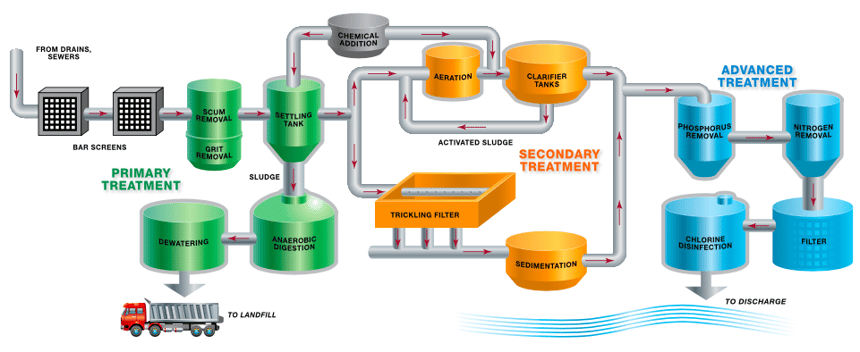However it was only with the introduction of chlorine as a treatment process to disinfect water in 1908 that the spreading of diseases through contaminated water could be controlled.
Chlorination in water treatment plant pdf.
Environmental protection agency epa allows drinking water treatment plants to use chloramine and chlorine to disinfect drinking water.
Two other authorities endorsed this proposal and published it in many other papers in 1895.
Water treatment processes 5 1 introduction.
Fact sheet on disinfection one of the primary mechanisms for the inactivation or destruction of pathogenic organisms.
Treatment plant s national pollutant discharge elimination system npdes permit limits effluent chlorine residual and toxicity.
Water system pipes develop a layer of biofilm scum that makes killing germs more difficult 5.
Us epa ow owm water permits division subject.
The multiple barrier approach is an important concept as it provides the basis for.
Early attempts at implementing water chlorination at a water treatment plant were made in 1893 in hamburg germany in 1897 the town of maidstone england was the first to have its entire.
One important alternative to dechlorination is to achieve disinfection without the use of chlorine.
If a treatment plant had a daily flow of 900 000 gallons per day and it needed to be dosed with 8mg l of gas chlorine how many pounds of chlorine would this take.
Purchasers of water treatment plant and supplies should.
When treatment plants are distant from the point of use chlorination is the best way to provide safe water to the end user.
Contains information on how to use chlorine as a disinfectant for municipal wastewater.
Water treatment plant supervisors and managers.
Water providers may temporarily switch from chloramine to chlorine disinfection to help remove this scum.
This is called the multiple barrier principle.
The revision of manual was carried out by consultants ryan hanley project manager.
Also available in spanish epa 832 f 99 062.
In a paper published in 1894 it was formally proposed to add chlorine to water to render it germ free.
If a treatment plant had a daily flow of 900 000 gallons per day and it needed to be dosed with 8mg l of gas chlorine how many.
Chlorination box 13 2.
Currently many permits require very low or non detect chlorine residuals making dechlorination critical.
Municipal water providers usually rely on measurements of chlorine residual the amount of chlorine remaining in the water after it reaches its destination as proof of safety.
Chlorination was rapidly accepted as an essential part of water.
This manual has been revised to reflect best practice in drinking water disinfection and the supervisory role of the epa.
























